by W.S. Cranshaw* (1/20)
Quick Facts…
- Tobacco budworm feeds on the buds and petals of many commonly grown flowers, including geranium, petunia and nicotiana.
- Damage tends to be worst following mild winters when soil does not freeze deeply.
- Hand picking can help control tobacco budworm in small gardens and can be most effective when done in the evening
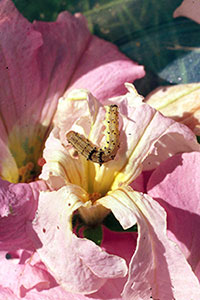 Figure 1. Tobacco budworm feeding on petunia blossoms. |
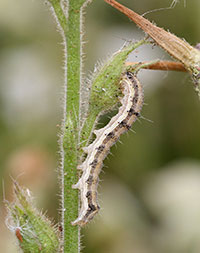 Figure 2. Tobacco budworm feeding on flower bud of nicotiana. |
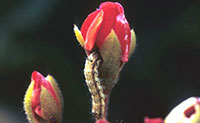 Figure 3. Tobacco budworm tunneling geranium bud. |
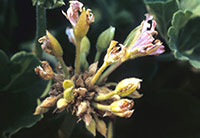 Figure 4. Cluster of geranium buds damaged by tobacco budworm. |
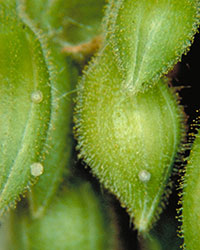 Figure 5. Eggs of tobacco budworm attached to geranium flower buds. |
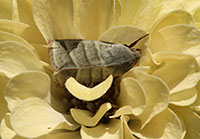 Figure 6. Adult tobacco budworm resting on zinnia flower. |
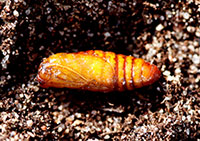 Figure 7. Pupa of geranium budworm, exposed from the soil. |
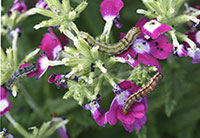 Figure 8. Tobacco budworm may be easily handpicked from small gardens. Tobacco budworm feeds mostly at night and handpicking is usually best done at dusk or dawn as these insects often hide around the base of the plant in day. |
In some years, tobacco budworm (Chloridea virescens) can be a serious pest of many garden flowers grown in areas of Colorado. Geranium is a particularly common host, leading to a regional name used to describe it – “geranium budworm”. Petunia and nicotiana are other common hosts. Rose, snapdragons, verbena and many other flowers are occasionally damaged.
In Colorado, problems are most common in the Denver Metro area and Grand Junction. Nationwide, this insect is one of the most devastating insect pests of agriculture, particularly in cotton and tobacco. The caterpillars may closely resemble corn earworm (Helicoverpa zea), a related insect that is a common pest of sweet corn and fruiting vegetables (e.g., peppers, tomatoes).
Life History
The adult stage is a moth with a wingspan of about 1 1/2 inches. The wings are light green with gray or brown overtones and a few wavy, cream-colored bands. The moths are active in the early evening, and females lay eggs on buds or leaves.
Tobacco budworm caterpillars can be quite variable in overall color. Dark forms are common but red, green or light brown larvae also occur. Color differences may be related, in part, to the color of the flowers on which the insects are feeding.
The caterpillars become full-grown in about a month, burrow into the soil and transform to the pupal stage. Adults emerge to repeat the cycle, with two generations normally produced each year. At the end of the season, as day length and temperatures decline, the insects go into a state of suspended development (diapause), that they maintain through winter.
The insect is therefore poorly adapted to the harsh winters of Colorado. Tobacco budworm spends the winter as a pupa, below ground, usually 2 to 6 inches deep, within a packed earthen cell that the full-grown caterpillar produces. Overwintering pupae generally are killed if exposed to temperatures below 20o F.
Survival through winter occurs best where there are warm soil microclimates, such as those found around the foundations of heated buildings. As a general rule, the number of overwintering tobacco budworms and the likelihood of problems are related to the severity of the previous winter.
Controlling Tobacco Budworm in Garden Plantings
To monitor for budworm and detect early stages of an infestation, periodically check buds and flowers for small holes and petal feeding injuries.
Use of plants that are not susceptible to tobacco budworm can avoid problems. Ivy-leaved geraniums (Pelargonium peltatum), which have smooth leaves, are much less frequently damaged than zonal types (Pelargonium x hortorum), which have sticky hairs on buds and leaves. Some variation in susceptibility to this insect has been observed among petunia cultivars.
In small plantings, the most practical control is hand picking the caterpillars. Some caterpillars may be on plants during the day, but most hide around the base of the plants in daytime and climb onto plants during dusk and early evening. An evening survey with flashlight should allow one to locate many of the caterpillars.
Maintaining potted plants in protected areas, such as garages, between seasons can allow tobacco budworm pupae to survive in the soil. If potted geraniums or other tender perennial host plants are kept between seasons, remove the soil to eliminate pupae and repot the plants before overwintering.
Insecticides. The tobacco budworm can be a fairly difficult insect to control with insecticides. Much feeding occurs within buds that cannot be reached by insecticide sprays. Also, since most feeding occurs at night, many caterpillars will be missed if sprays are applied during daytime. It is recommended that applications for tobacco budworm be made late in the day, preferably at dusk.
Insecticides that are most effective for control of tobacco budworm are products with some residual activity that can kill caterpillars for several hours or days. These include spinosad and certain pyrethroid insecticides (Table 1). Garden insecticides that will not be effective for tobacco budworm include pyrethrins, insecticidal soaps and the systemic insecticide imidacloprid.
Use of insecticides is complicated when the plants are in flower and also attractive to pollinating insects, particularly bees. No insecticides can be applied to any flowering plant during a time bees are visiting the plant.
Risks to bees is particularly high with some of the pyrethroid insecticides that can be hazardous to bees for a day or more after application. Pyrethroid insecticides should not be used on plants that have flowers that are attractive to bees.
There are two options for control of tobacco budworm on plants where there is a conflict with insecticide use and pollinators. One of these is to use spinosad and to apply it after dusk, when bees are no longer actively foraging. Spinosad can safely protect pollinating insects if sprays are allowed to dry and pollinators do not visit within 3 hours following the application.
The other alternative is Bacillus thuringiensis var. kurstaki (Bt). This is a microbial insecticide that is specific in its effects on insects, only killing caterpillars that eat it. Since Bt only works if a tobacco budworm caterpillar eats a part of the plant that is coated with Bt sprays or dusts, effectiveness for control can vary on different plants. On plants such as geranium, where the caterpillars drill into the buds and eat little of the outside surface, Bt will likely be ineffective. On plants where the caterpillars feed extensively on leaves or blossoms, such as petunia, Bt can be expected to be most effective. Since Bt insecticides breakdown rapidly (hours) in sunlight all applications should be made late in the day.
Table 1. Insecticides useful for control of tobacco budworm in flower gardens. Examples of trade names include products that are available either through retail or marketed to pest control professionals.
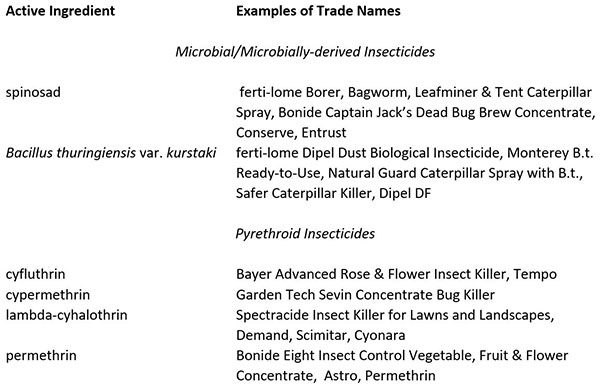
* W.S. Cranshaw, Colorado State University Extension entomologist and professor, bioagricultural sciences and pest management. 12/96. Revised 1/20.
Colorado State University, U.S. Department of Agriculture and Colorado counties cooperating. Extension programs are available to all without discrimination. No endorsement of products mentioned is intended nor is criticism implied of products not mentioned.
Go to top of this page.





